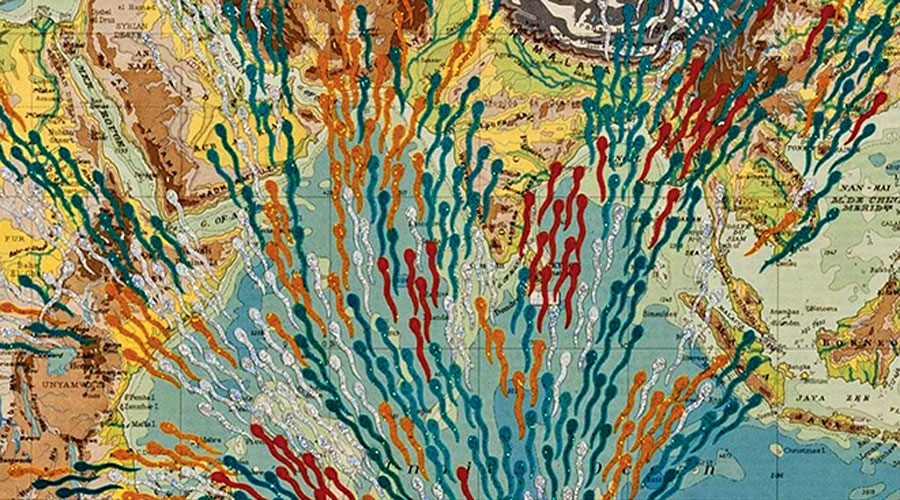At a time when physical journeys have been rendered impossible by the pandemic, maps, much like books, can take the armchair-bound traveller on unexplored trails. This is perhaps why maps become the entry point into a topsy-turvy world in Bharti Kher’s solo exhibition that was held at Galerie Perrotin’s online viewing salon recently.
Kher appropriates colonial cartographic works — maps published in the Larousse Atlas in 1947 — as a site to build counter-narratives. She restores the presence of bodies in maps, visual representations that are usually emptied of them. Kher does this by populating the maps with bindis in various shapes, sizes and colours to mark the movement of people between continents. In doing so the artist introduces chaos — can life be without it? — disrupting the map’s self-assured grids and geometric perfection.
Kher replaces mapping’s formal computations with organic realities of a changeable, material space: a world defined by living entities that move through and shape it. Kher has said that for her the bindi — originating from the Sanskrit bindu, meaning point — is a representation of the third eye. Its presence on these maps then represents a reversal of the gaze — eyes looking outwards, challenging the viewer’s image of a neat and orderly world. The paths that Kher charts with her bindis are more than just migratory routes, they are also remnants of memory for history is full of globe-trotters in search of home, happiness, shelter. This banishment of the image of the map as an insipid, one-dimensional portrayal of the world is inspiring. A playful and vibrant fluidity dominates Kher’s compositions, throwing up a vision of the world as a site of sublime flux.











